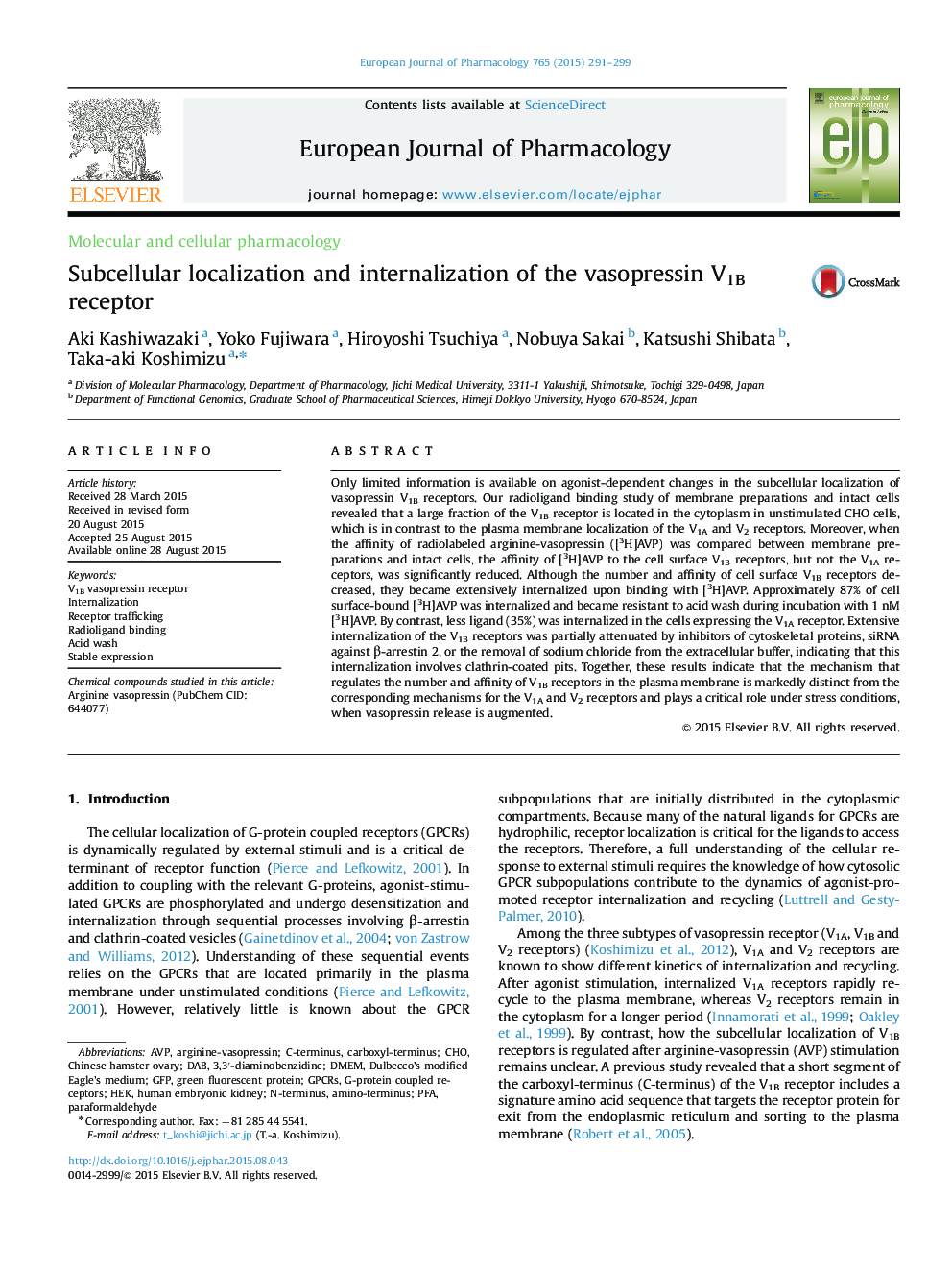| Article ID | Journal | Published Year | Pages | File Type |
|---|---|---|---|---|
| 5826874 | European Journal of Pharmacology | 2015 | 9 Pages |
Abstract
Only limited information is available on agonist-dependent changes in the subcellular localization of vasopressin V1B receptors. Our radioligand binding study of membrane preparations and intact cells revealed that a large fraction of the V1B receptor is located in the cytoplasm in unstimulated CHO cells, which is in contrast to the plasma membrane localization of the V1A and V2 receptors. Moreover, when the affinity of radiolabeled arginine-vasopressin ([3H]AVP) was compared between membrane preparations and intact cells, the affinity of [3H]AVP to the cell surface V1B receptors, but not the V1A receptors, was significantly reduced. Although the number and affinity of cell surface V1B receptors decreased, they became extensively internalized upon binding with [3H]AVP. Approximately 87% of cell surface-bound [3H]AVP was internalized and became resistant to acid wash during incubation with 1 nM [3H]AVP. By contrast, less ligand (35%) was internalized in the cells expressing the V1A receptor. Extensive internalization of the V1B receptors was partially attenuated by inhibitors of cytoskeletal proteins, siRNA against β-arrestin 2, or the removal of sodium chloride from the extracellular buffer, indicating that this internalization involves clathrin-coated pits. Together, these results indicate that the mechanism that regulates the number and affinity of V1B receptors in the plasma membrane is markedly distinct from the corresponding mechanisms for the V1A and V2 receptors and plays a critical role under stress conditions, when vasopressin release is augmented.
Keywords
DMEMAVPGPCRsPFAHEKGFPDAB3,3′-diaminobenzidineC-terminusG-protein coupled receptorsN-terminusarginine-vasopressinAmino-terminusRadioligand bindingChoStable expressionChinese Hamster OvaryInternalizationacid washReceptor traffickingDulbecco’s modified eagle’s mediumparaformaldehydegreen fluorescent proteincarboxyl-terminushuman embryonic kidney
Related Topics
Life Sciences
Neuroscience
Cellular and Molecular Neuroscience
Authors
Aki Kashiwazaki, Yoko Fujiwara, Hiroyoshi Tsuchiya, Nobuya Sakai, Katsushi Shibata, Taka-aki Koshimizu,
